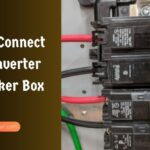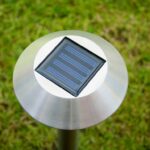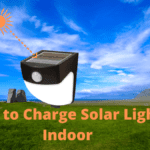How Many Solar Panels for 3000 Watt Inverter?
To power a 3000 watt inverter, you will need approximately 10 solar panels. Solar panels are an excellent source of renewable energy that can be used to power various appliances and devices.
If you’re considering installing a 3000 watt inverter, it’s essential to determine how many solar panels you’ll need to generate sufficient electricity. A 3000 watt inverter typically requires around 10 solar panels, depending on their wattage and efficiency. These panels harness the sun’s energy and convert it into usable electricity, allowing you to reduce your reliance on traditional power sources and lower your carbon footprint.
Investing in solar panels not only provides a sustainable energy solution but also offers long-term cost savings on your energy bills.
Factors Affecting Solar Panel Efficiency
When it comes to determining the number of solar panels needed for a 3000 watt inverter, it is essential to understand the factors that affect solar panel efficiency. By optimizing these factors, you can ensure that your solar panel system performs at its maximum potential, providing you with renewable energy and significant cost savings.
How to Connect Solar Inverter to Breaker Box
Solar Panel Efficiency Explained
Solar panel efficiency refers to the ability of a solar panel to convert sunlight into usable electricity. The amount of sunlight that successfully converts to electricity serves as a measure. The higher the efficiency, the more power can be generated from the same amount of sunlight. When selecting solar panels for a 3000 watt inverter, it is crucial to choose ones with high efficiency to maximize the energy output.
Tech Advancements In Solar Panel Efficiency
Thanks to ongoing technological advancements, solar panels have become significantly more efficient over the years. Manufacturers are constantly developing new materials and designs that improve the conversion of sunlight to electricity. For instance, Thin-film solar panels have made great efficiency strides and are becoming increasingly popular. By staying informed about the latest developments in solar panel technology, you can choose panels that offer optimal performance for your 3000 watt inverter.
Impact Of Weather Conditions On Solar Panel Performance
The weather plays a crucial role in determining the performance of solar panels. Although solar panels work best in direct sunlight, the impact of indirect and cloudy conditions should not be underestimated. According to studies, even on a cloudy day, solar panels can still generate around 10-25% of their maximum capacity. However, extreme weather conditions such as intense heat or freezing temperatures can decrease efficiency temporarily. It is therefore important to consider the regional weather patterns and choose solar panels that can withstand and adapt to the specific conditions in your area.
By carefully considering the factors affecting solar panel efficiency, you can select the right number of solar panels for your 3000 watt inverter system. Aim for high-efficiency panels and stay up to date with the latest technological advancements in solar panel technology. Additionally, take into account the weather conditions in your region to ensure optimal performance. By optimizing these factors, you can harness the power of solar energy and reduce your carbon footprint, while enjoying the cost savings that come with it.
Understanding Inverter Efficiency
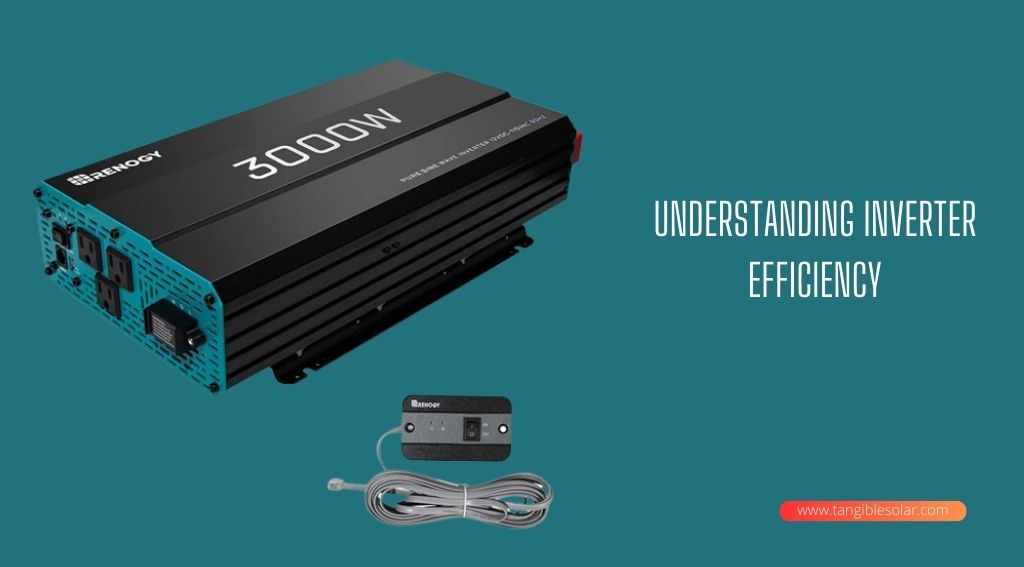
When it comes to solar power systems, understanding inverter efficiency is crucial in determining the number of solar panels needed for a 3000 Watt inverter. The efficiency of an inverter plays a significant role in the overall performance and output of the solar energy system. In this section, we will delve into its importance, how to calculate the required inverter capacity and the impact of inverter efficiency on solar power output.
The Role Of The Inverter In Solar Power Systems
The inverter is a vital component of a solar power system. Its main job is to change the solar panels’ direct current (DC) electricity into alternating current (AC), the kind of electricity that powers homes and businesses. In other words, it converts the solar energy that the solar panels have captured into a usable form.
Calculating The Required Inverter Capacity
To determine the necessary inverter capacity for a 3000 Watt inverter, it is important to consider both the inverter’s continuous power rating and its peak power rating. The continuous power rating represents the amount of power that the inverter can sustainably deliver on an ongoing basis, while the peak power rating indicates the maximum power the inverter can handle for short periods.
To calculate the required inverter capacity, you need to add up the wattages of all the electrical appliances and devices that will be running simultaneously. This sum will give you the total power demand. It is important to note that the inverter’s capacity should be slightly higher than the total power demand to avoid overloading and ensure the proper functioning of the system.
The Impact Of Inverter Efficiency On Solar Power Output
Inverter efficiency plays a crucial role in the overall output and performance of a solar power system. It represents the ratio of the AC power output to the DC power input. Higher inverter efficiency means less energy is lost during the conversion process. This leads to a greater amount of usable electricity being generated from the solar panels.
The table below illustrates the impact of various inverter efficiencies on the overall power output of a solar system:
| Inverter Efficiency | Power Output from Solar Panels |
| 90% | 2700 Watts |
| 95% | 2850 Watts |
| 98% | 2940 Watts |
As you can see, even a small difference in inverter efficiency can have a big impact on the power the solar panels produce. Therefore, selecting an inverter with high efficiency is crucial to maximizing energy output and achieving higher overall system performance.
Determining The Wattage Of Solar Panels
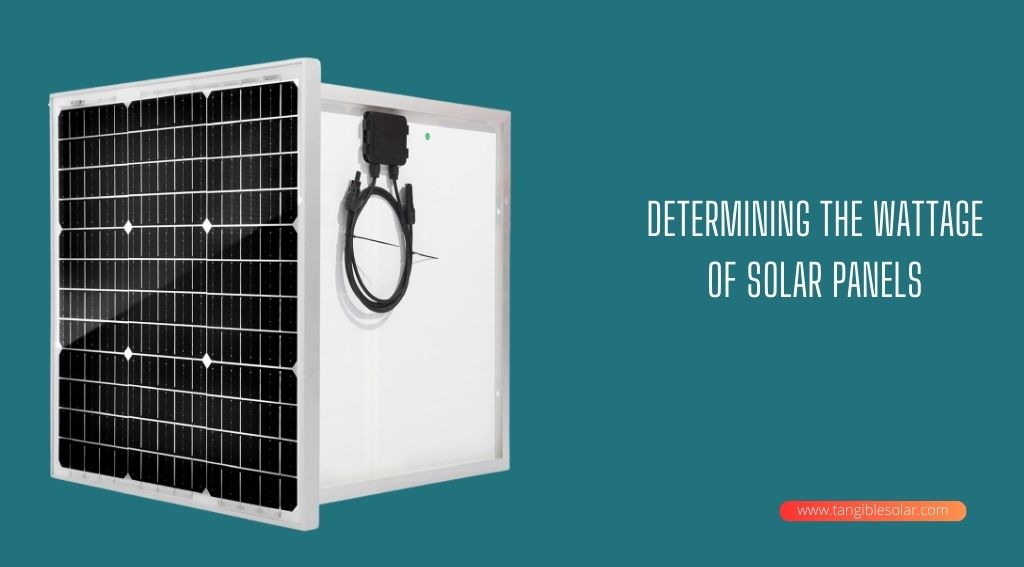
When it comes to setting up a solar power system for your 3000 watt inverter, one of the key considerations is determining the appropriate wattage of solar panels. The wattage of solar panels determines how much power they can generate, and therefore, it is crucial to select the right wattage to ensure optimal performance and efficiency.
How To Calculate The Wattage Requirements For A 3000 Watt Inverter
To calculate the wattage requirements for a 3000 watt inverter, you need to consider a few factors. The first thing you should do is figure out how much energy your inverter-powered appliances and devices use on a daily basis. This is usually measured in watt-hours (Wh) or kilowatt-hours (kWh). You can find this information on the labels or specifications of your devices.
Once you have the average energy consumption in watt-hours, you need to divide it by the number of hours of sunlight available in your location. This will give you the average energy production required per hour to meet your energy needs. To make this calculation easier, you can use the following formula:
Energy Production per Hour (in watts) = Average Energy Consumption (in watt-hours) / Hours of Sunlight
For example, if your average energy consumption is 6,000 watt-hours and you have 6 hours of sunlight in your location, the energy production per hour required would be:
Energy Production per Hour = 6000 watt-hours / 6 hours = 1000 watts
Since you have a 3000 watt inverter, you will need at least 3000 watts of energy production per hour to fully utilize the inverter’s capacity.
Factors To Consider When Selecting Solar Panels For A 3000 Watt Inverter
When selecting solar panels for a 3000 watt inverter, there are several factors you should take into account to ensure compatibility and optimal performance:
- Efficiency: Look for solar panels with high-efficiency ratings, as this will maximize the energy production for the given surface area.
- Wattage: As discussed earlier, the wattage of the solar panels should match or exceed the energy production per hour required to power your appliances. Consider the number of panels needed to achieve the desired wattage.
- Size and Mounting: Consider the available space for installation and the mounting options for the solar panels. Some panels may require roof mounting, while others can be installed on the ground or integrated into building materials.
- Durability and Warranty: Ensure that the solar panels are made of high-quality materials and come with a reliable warranty to protect your investment.
- Brand Reputation: Research and choose solar panels from reputable manufacturers known for their quality and expertise in the industry.
Matching The Wattage Of Solar Panels To Maximize Power Output
To maximize the power output of your solar power system with a 3000 watt inverter, it is essential to match the wattage of the solar panels to the inverter’s capacity. Ideally, the rated wattage of the solar panels should slightly exceed 3000 watts to account for any losses in energy conversion and ensure efficient operation.
By properly matching the wattage of the solar panels, you can harness the full potential of your 3000 watt inverter and generate sufficient electricity to meet your energy requirements. This will enable you to enjoy sustainable and eco-friendly power while potentially saving on utility bills.
Optimizing Solar Panel Placement
When setting up a solar system with a 3000-watt inverter, it is crucial to consider the placement of the solar panels for maximum efficiency. Proper optimization of solar panel placement can significantly impact sunlight exposure, power generation, and overall system performance. In this article, we will explore the importance of proper solar panel orientation, maximizing sunlight exposure through tilt and angle adjustments, and the potential shading issues that can impact solar power generation.
Importance Of Proper Solar Panel Orientation
Proper orientation of solar panels is essential to harnessing the most energy from the sun. The optimal orientation for solar panels is to face south (in the Northern Hemisphere) or north (in the Southern Hemisphere) to maximize sunlight exposure throughout the day. By aligning the panels towards the equator, they can capture the maximum amount of sunlight, thus maximizing energy production. Deviating from this recommended orientation can result in a decrease in energy output.
Maximizing Sunlight Exposure Through Tilt And Angle Adjustments
In addition to proper orientation, adjusting the tilt and angle of solar panels can further optimize sunlight exposure. Tilting the panels at an angle equal to the geographic latitude allows the panels to capture sunlight most efficiently. For instance, if you are located at a latitude of 30 degrees, tilting the panels at a 30-degree angle will maximize energy production. It is important to note that the angle should be adjusted seasonally to account for the sun’s changing position throughout the year, ensuring optimal energy generation.
Potential Shading Issues And Their Impact On Solar Power Generation
Shading can have a significant impact on the performance of solar panels. Even a small amount of shading can lead to a reduction in energy production. Any obstruction, such as nearby buildings, trees, or other objects, can cast shadows on the panels and limit sunlight exposure. It is crucial to carefully assess the surrounding environment to identify potential shading issues and design the system accordingly. Installing the panels in an unshaded area will help maximize sunlight exposure and prevent any unwanted energy losses.
In order to reduce shading from inter-row shading, it is also crucial to take into account the wiring and placement of the panels. Proper spacing between the rows of solar panels helps to mitigate shading from one panel casting a shadow on another. This inter-row shading can drastically decrease the overall system’s energy production.
By optimizing solar panel placement through proper orientation, tilt, and angle adjustments and addressing potential shading issues, you can maximize the energy production of your 3000-watt inverter solar system. These considerations play a vital role in harnessing clean and sustainable energy from the sun, ensuring your solar system operates at its highest efficiency.
Increasing Solar Power Output With Additional Panels
Increasing Solar Power Output with Additional Panels When it comes to maximizing the energy production of your solar power system, adding more solar panels can significantly boost its output. By increasing the number of panels in your system, you are effectively harnessing more solar energy, which in turn allows you to generate more electricity. In this section, we will explore the benefits of adding more solar panels to a system, how to calculate the number of additional panels for optimal performance, and considerations for upgrading an existing solar power system.
FAQs: How Many Solar Panels For 3000 Watt Inverter
How Many Solar Panels for a 3kV Inverter?
For a 3kV inverter, the number of solar panels needed depends on their wattage. On average, a 250W panel can produce around 1kWh of electricity per day. So, you would need approximately 12 solar panels (3000W / 250W) to power a 3kV inverter.
How Many Solar Panels Are in a 3000w Inverter?
A 3000W inverter can support multiple solar panels, but the exact number depends on the wattage of each panel. The higher the panel’s wattage, the fewer panels you’ll need. It’s best to consult with a solar professional to determine the ideal number of panels for your specific setup.
How Many Solar Panels Do I Need for 3000?
You will need around 10 solar panels to generate 3000 watts of power.
How Many Batteries Do I Need to Power a 3000W Inverter?
To power a 3000W inverter, you would typically need multiple batteries. The exact number depends on the battery capacity and voltage. It’s recommended to consult the specifications of the inverter and battery to determine the appropriate configuration.
Conclusion
Determining the number of solar panels required for a 3000 watt inverter is crucial for maximizing energy efficiency. By considering factors such as panel wattage, location, and electricity consumption, you can ensure optimal performance and savings. Consulting with a reputable solar professional is recommended to accurately assess your specific needs and design an effective solar system.
Taking these steps is a significant investment towards a sustainable and eco-friendly future.

